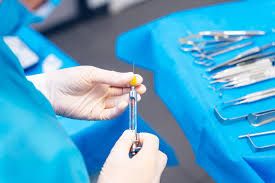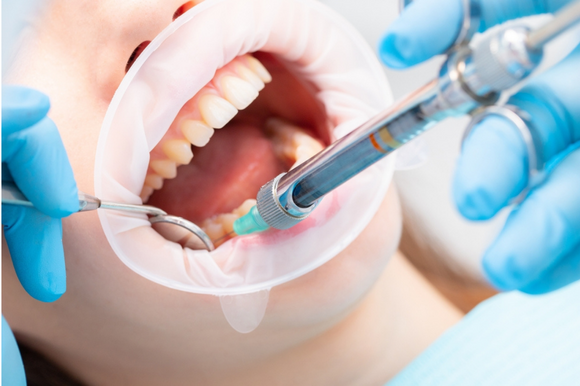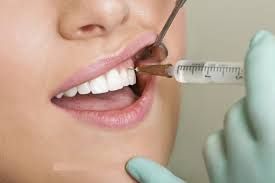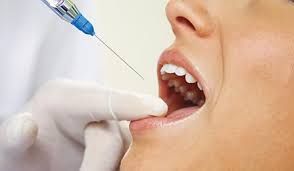Local anesthesia is one of the most important clinical apparatus commonly used in dentistry. It is mostly used in many dental specialty in dental sciences most especially oral and maxillofacial surgery, operative and endodontic dentistry, paediatric dentistry and so on.
However, like many other clinical reagents in medical science generally, local anesthesia also has its own complications, either due to misuse or even a complication of using in certain individuals, allergic reactions and so on.
Now let's dive straight to some of the most common complications of local anesthesia usage in paediatric dentistry to be precise at least for now.
Complications of local anesthesia administration in paediatric dentistry is divided into two major groups which:
1- Systemic complications of local anesthesia
2- Localized complications of local anesthesia
Localized complications is further sub-divided into two groups, which are early and late complications.
1- System Complications
Systemic factors of complications are those ones that has to with the general body systems or systemic blood over a wider range of the body. That is not peculiar or localized to a certain region of the body.
Systemic complications include the following;
i- Psychogenic complications
ii- Allergic complications
iii- Toxicity
iV- Drug interactions
v- Infection
i- Psychogenic Complications
Psychogenic complications include those complications from the nervous system or mental health of the patient.
The most common form of these ones are fainting and syncope.
Syncope due to vasovagal attack from anxiety, sudden pain and fear. The risk can be reduced by effective and carrying the patient along with the procedure to avoid any form of fear that can trigger syncope.
Patient can be managed effectively by putting the patient in supine position with elevated legs.
ii- Allergy
Allergy emerging from local anesthesia is very rare and seldom.
Allergy can appear in any form such as ranging from minor localized reactions to anaphylactic shock.
If a child is suspected to have allergies for a local anesthesia. He/she is recommended to be referred for patch testing to avoid future complications.
Allergy can be due to ester group in the chemical component of local anesthesia such as procaine, cocaine, benzocaine and others or allergies of latex used to make rubber bungs of the cartridges.
Amide groups are relatively free from sensitising reactions.
iii- Infections
The use of sterilised dental syringes, disposable needles, single patient use cartridges and prevention of cross infection by the application of appropriate cross infection measures can greatly assist in the removal of the possibility of cross infection with agents of HIV, Gonnorhoea, Hepatitis B and C among other types of infectious disease.
iv- Drug-interaction
Advice from an experienced professional or physician should be sought and followed for a child on significant medication which might possibly cause devastating complications or consequence due to the use of any form of local anesthesia.
v- Toxicity
Toxicity of local anesthesia in children is more due to underdeveloped liver which would be required for detoxification of excessive drug constituents and also the higher perfusion rates of tissues, coupled with higher basal metabolic rates and higher cardiac output of blood into the circulation seems to be the reason for greater degree of toxicity of local anesthesia agents in children.
Toxic reactions to local anesthesia could be due to;
intravascular injections, drug interactive effects with other agents such as sedatives, stimulants and the rest, overdose of local anesthetic administration.
On the other hand, immature and underdeveloped central nervous system and cardiovascular system makes the both systems more susceptible to toxicity of local anesthesia at lower drug level and concentration than in adults and older age children.
How to Prevent occurrence of Toxicity.
1- Dosage administered should correspond to the weight of the patient in question.
2- To avoid accidental intravascular injections, aspiration before injection or using self-aspirating syringes are recommended.
3- Local anesthestic agent with vasoconstrictors are advised to be used in children as this made reduce the flow of its agents into circulation and also reduced the need for repeated injection at several intervals.
Last but not least, how to treat toxicity.
Toxicity can be managed effectively by applying the following procedures;
i- Stopping the treatment once observed.
ii- Provide life support or follow its protocols.
iii- Seeking for medical help and intervention.
iv- Monitoring of vital signs.
That's all as regards the post on systemic factors of complications for local anesthesia. The coming subsequent post would be on the localized factors of complications of local anesthesia administration to avoid very lengthy paragraphs and notes.
Thanks for the nice attention given and happy blogging.
Happy Blogging and Reading 💥🦷💥🦷🦷
Video from Glidewell YouTuber




Telegram and Whatsapp